#Andrew Sumner
Text
Michael Moorcock celebrates “The Making of a Sorcerer”
Mighty-and-always-entertaining Michael Moorcock talks about the second volume of Titan Comics UK’s global re-release of his comic book opus Moorcock’s Multiverse in a new Forbidden Planet TV videocast
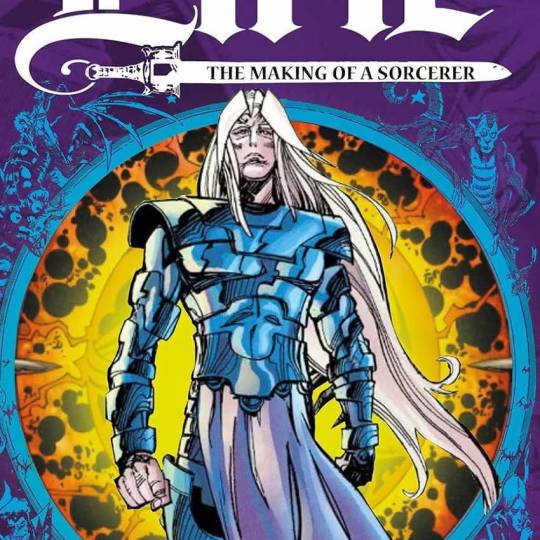
View On WordPress
#Andrew Sumner#downthetubes News#Elric of Melnibone#Fantasy Comics#John Ridgway#Mark Reeve#Michael Moorcock#Moorcock&039;s Multiverse#Titan Comics#Walt Simonson#Walter Simonson
2 notes
·
View notes
Text

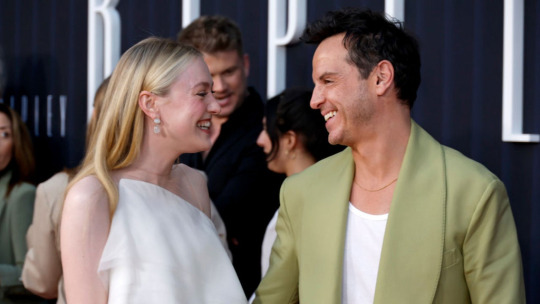

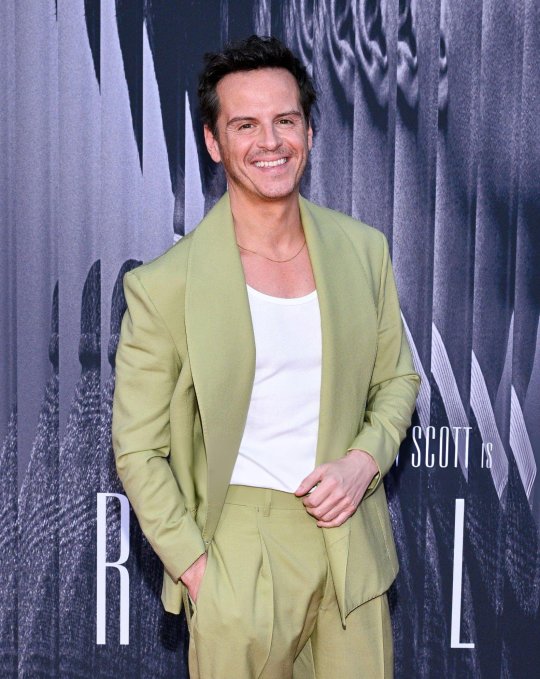
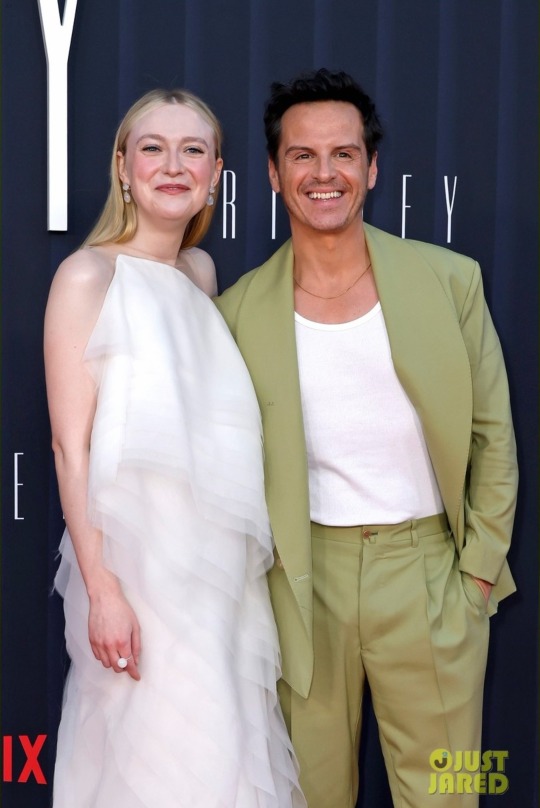
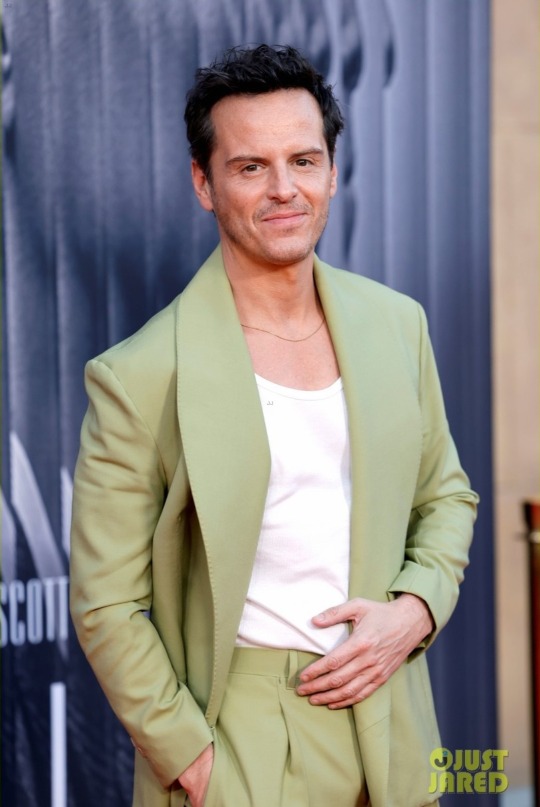

(L-R) Maurizio Lombardi, Andrew Scott, Dakota Fanning, Eliot Sumner and Steven Zaillian attend the Premiere of Netflix's "Ripley" at The Egyptian Theatre Hollywood on April 03, 2024 in Los Angeles, California.
🎥 Hollywood Reporter 📷 Getty Images
#andrew scott#dakota fanning#maurizio lombardi#eliot sumner#steven zallian#ripley press#ripley#premiere screening
24 notes
·
View notes
Text
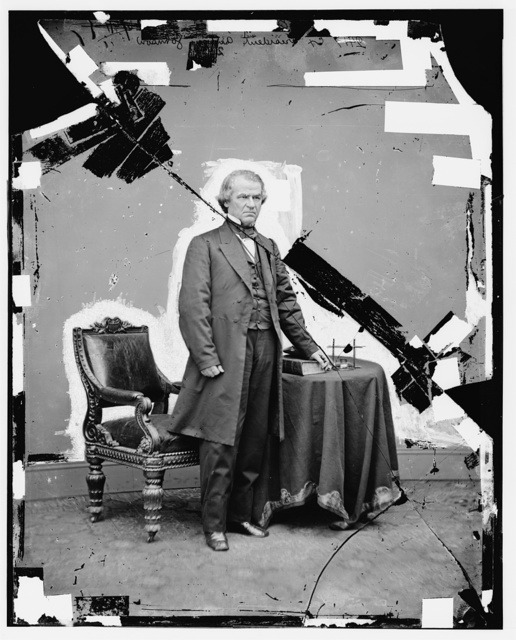
"Johnson is an insolent, drunken brute in comparison with which Caligula's horse was respectable."
-- Senator Charles Sumner (R-Massachusetts) on President Andrew Johnson
#History#Presidents#Andrew Johnson#President Johnson#Vice Presidents#Presidential History#Quotes About Presidents#Quotes#Charles Sumner#Senator Sumner#Reconstruction#Politics#Political History#Political Leaders#Political Rivalries#Radical Republicans#Civil War#Assassination of Abraham Lincoln#Lincoln Assassination#Inauguration of Andrew Johnson#Impeachment of Andrew Johnson#Johnson Impeachment#Political Feuds#Presidency#Congress#U.S. Senate
20 notes
·
View notes
Text








the north water, season 1 episode 4: “the devils of the earth” (2021) dir. andrew haigh / the north water (2016) by ian mcguire
106 notes
·
View notes
Text
'There’s something rather extraordinary at the core of the new Netflix miniseries RIPLEY, based upon the famed 1955 novel The Talented Mr. Ripley by Patricia Highsmith. It’s what drives antihero Thomas Ripley (Andrew Scott) to covet the lifestyle of the rich. It has less to do with any glamour and glitz, or even access to Italian villas, fine dining, and tailored clothing, and all to do with sheer relief. The relief that comes from never having to worry about money, the nagging to make more of it, or living the fear of losing it. When con artist Tom Ripley reaches his status of privilege and money, he achieves a zen-like calm, even if he’s achieved his goals via notorious means. It’s access, sure, to better living, finer accommodations, and designer clothes, but mostly it seems to be access to peace of mind that this thief has never known.
And that’s why filmmaker Steven Zaillian’s eight-episode miniseries is so strong. It strips away all the easy things for an audience to drool over in it and concentrates on motive. Why does Tom do what he does? The landscapes and fine wines are incidental. It’s what having money does to his headspace that is dramatized here with such cleverness.
The story remains the same from the book and previous filmed adaptations: Tom Ripley is asked by the wealthy Herbert Greenleaf (Kenneth Lonergan) to convince his prodigal son Dickie (Johnny Flynn) to return to NYC from Italy. But Tom’s introduction to Dickie’s leisurely lifestyle in the coastal city of Atrani turns out to be catnip for his former college classmate.
Still, this is a film about cons and crimes, not country splendor and that is why Zaillian shot his adaptation in black and white. He doesn’t want the camera lusting over sunny days, tanned torsos, and electric nightlife like director Anthony Minghella did with his lingering shots of such things in 1999’s THE TALENTED MR. RIPLEY. In Minghella’s film, everything was glamorous, especially bronzed playboy Dickie (Jude Law) and his leonine girlfriend Marge Sherwood (Gwyneth Paltrow). It was easy to see why the impressionable and naïve Tom (Matt Damon) would become so mesmerized. Heck, Damon all but played the character as a kid in a candy store, wanting to gorge himself on everything associated with the one percent.
Not Scott. He plays Tom as a desperate criminal who wants the calm that comes with a fat wallet. And Johnny Flynn and Dakota Fanning, playing Dickie and Marge this go-round, are hardly worth putting on a pedestal. As directed by Zaillain, their rich characters are dead-eyed, soulless zombies. These two world travelers are not bright, nor personable, and far from gorgeous. What they are, are the type of entitled rich kids who sleepwalk through their lives of privilege, so used to daddy’s money that they aren’t impressed by it one iota.
And wow, is this couple lacking in any discernible talent. Dickie wants to be a painter but his work is simply awful, while would-be writer Marge’s poems and prose are wholly mediocre, as are the bland photographs she’s taken during her time in Atrani. Tom likes them less as people and more as aspirational figures; those who never have to scrape and claw to survive. These two dullards just sit around their homes all day with nary a worry. It’s a state of bliss that Tom would love to know. So much so, that he’ll kill to experience it.
The black and white cinematography is Zaillien’s way of showcasing how Ripley delineates his “have and have not” sensibilities. It’s also there to underline the miniseries noir-ish tendencies as once murder enters the frame, the remainder of the series becomes a cat-and-mouse game between Ripley and an intrepid Italian detective ((Maurizio Lombardi) on his trail. The black-and-white palate is also there to underline that this is essentially a dark comedy. It’s pretty funny watching Tom have to continue his life of labor once he starts killing people as it takes a ton of effort to dispose of bodies and keep track of his ever-mounting series of lies. The poor bastard was already huffing and puffing enough as it was simply following Dickie up and down the various staircases they encountered through the winding streets of the city, and now homicide is really making him put in the work!
At times, Scott’s performance recalls a jittery Anthony Perkins in his male ingenue days, but more often than not, his Tom is played close to the vest. Even when Dickie’s loutish friend Freddie (a scene-stealing Eliot Sumner) comes a calling, suspicious about why Dickie has disappeared, Scott’s Tom remains stone cold. And it’s darkly humorous how he returns a square, glass ashtray he weaponizes to its proper place on an end table. He adjusts it just so.
It’s always easy to vilify the rich, of course. and Hollywood has done it time and time again, from YOU CAN’T TAKE IT WITH YOU in 1938 to SALTBURN this past Christmas. RIPLEY may be the third filmed adaptation of Highsmith’s classic book but I think it’s the best of all of them due to its slyly subtle nastiness and emphasis on Tom’s truest motive. Class warfare has rarely been as apparent as it is here, seen in black and white by both Tom and Zaillian’s camera.'
#Ripley#Netflix#Patricia Highsmith#The Talented Mr Ripley#Andrew Scott#Steven Zaillian#Jude Law#Matt Damon#Gwyneth Paltrow#Dickie Greenleaf#Marge Sherwood#Johnny Flynn#Anthony Minghella#Kenneth Lonergan#Freddie Miles#Eliot Sumner#Maurizio Lombardi
6 notes
·
View notes
Text
I'm all in favour of gender blind casting. And casting non-binary actors in whatever gendered roles they feel comfortable playing.
But I do think that they should be held to the same standard of skill and ability as everyone else in the production.
#this is explicitly about Eliot Sumner in Ripley#they are so bad as Freddie#and to have them act against Andrew Scott is painful to watch
4 notes
·
View notes
Text
Random people hunger games! Featuring historical figures, Wild Kratts, politicians, and me.

Stephen Douglas being Stephen Douglas. Dang it Kerry
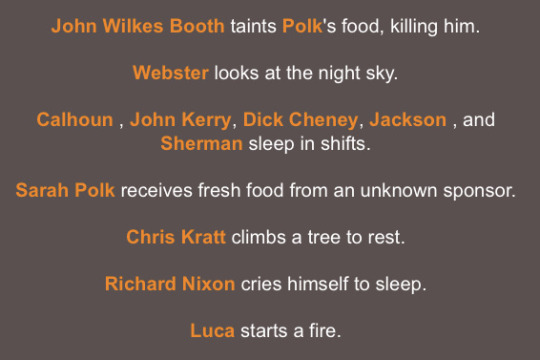
Chris being Chris. Booth being evil. Nixon being relatable. AND IVE GOT A FIRE :D

Charles Sumner and George W. Bush do the right thing. I sleep with Clay and Gore. AND WHO THE FUCK GAVE CHENEY AN EXPLOSIVE?

Caviva! Yay!

Zach and Aviva truce? Never thought I’d see the day. Bernie Sanders x Charles Sumner? And same, Dubya.
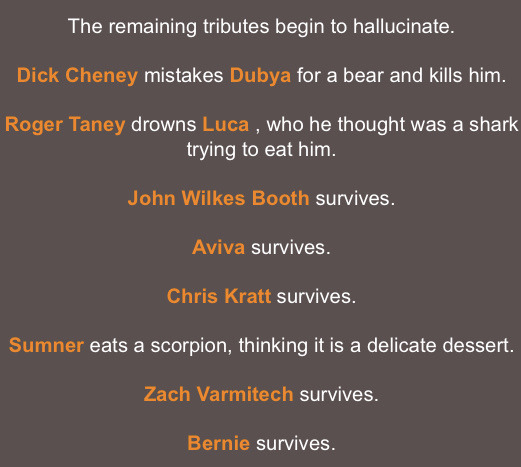
Taney drowns me… thinking I was an animal that could breathe underwater? Also dammit Sumner

GOOD JOB BERNIE AND ZACH. Also Booth x Chris?

AGAIN BOOTH X CHRIS. Also Zach being cute

Yay! Chris defeats his enemy and also Roger B. Taney.

NOOOOOOO!
Booth won the hunger games
#henry clay#john c calhoun#andrew jackson#james k polk#stephen douglas#roger taney#al gore#dick cheney#george w bush#richard nixon#chris kratt#aviva corcovado#bernie sanders#john kerry#me#john wilkes booth#hunger games simulator#zach varmitech#charles sumner#sarah polk
16 notes
·
View notes
Text
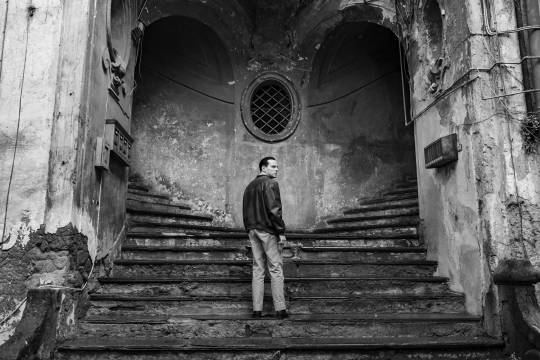
Ripley (prod. Steven Zaillian).
Zallian's fresh but still cold-blooded take on Tom Ripley makes for an exciting remake. While the more methodical, episodic pace stretches certain plot contrivances about a man living double lives yet interacting with the same small pool of townspeople, Ripley makes the cat-and-mouse game of a con job with more than enough style and flair. There's an elegance to the strikingly pulpy European material.
#ripley#netflix#netflix original#netflix series#netflix show#steven zaillian#andrew scott#dakota johnson#johnny flynn#tv review#tv#television#patricia highsmith#the talented mr ripley#the talented mr. ripley#tom ripley#thomas ripley#tv show#tv series#series#show#miniseries#limited series#mini series#mini-serieis#robert elswit#eliot sumner#showtime
4 notes
·
View notes
Text
Antebellum Peeps ( TM ) As Dogs
some people and dogs were not included. include more at your leisure..
Albert Gallatin is a Labrador Retriever. He's smart, resourceful, basic, but he also gives very reasonable person vibes, even if he can feel a little boring at times. Still, that complete uninterestingness is what makes him special.
Samuel Howe is a Schnauzer. He's caring, social, protective of what he cares about for as long as he cares about it, AND I have never seen another dog that looks as much like a misogynist than schnauzers do. I like to think the ears and muzzle hair also fit him.
William Lloyd Garrison is a Doberman. He's proud, looks intimidating at first, and doesn't forget or forgive easily. He's also noble, and is just generally popular and well known. You can always depend on him to do what's right, even if its not exactly what you want him to do. This applis for Garrison as a dog breed, but also for him as a human being.
Floride Calhoun is a Chow Chow. She's high strung, bites strangers, and judges and ranks everyone based on their usefulness and importance to her. Her immediate instinct upon meeting someone in need of help is to first consider prosletization ( TM ) and when that person inevitably dies, she says its great that they converted to Christianity before they passed away ( what the FUCK Floride ). Both of these are very Chow Chow behaviors.
Thomas Benton is a Rottweiler. Like a doberman, but more stocky, Benton is courageous, good-natured ( when he isn't faced with Clay, Calhoun, or Foote ), and confidently self assured. He's a stereotypical police dog, however... so uhhh. He is MANLY though.
Andrew Jackson is a Canary Dog in behavior and a Greyhound in physique. He is large. He engages in dogfights. He looks fast, but is actually fairly chill and doesn't mind being lazy. He could rip someone apart. He WILL rip someone apart. He drools. He contains multitudes.
Benjamin Brown French is a Goldendoodle. Like a goldendoodle, French was created upon this Earth for one purpose. For a goldendoodle, that purpose was to remind mankind of their hubris. For French, it was to be the guiding voice of The Field of Blood. Both of them are lovable and funny unique abominations in the worst/best way.
Charles Sumner is an Akita. A very sleep deprived Akita with heart issues. He is very strong, large, bear-like, and could probably take down a tank if he could. Like an Akita, though, Sumner is long-lasting and has a thick skin! Metaphorically.
Harriet Martineau is a Papillon. She's very intelligent, petite, friendly, and has a much smaller stature than most of the other dogs on here, and despite not being American, is actually much more well-educated about American politics than actual Americans! She is also tiny but gives an air of great dignity and royal elegance as well a cuteness.
Julia Howe is a Wetterhoun. She's a water dog, with a natural talent, and despite being fairly reserved, gets along well with other people. She also has a strong will and won't back down from a challenge and is actually way more tolerant than most other people around her notice or give her credit for.
Daniel Webster is a Mastiff. Like a Mastiff, Daniel Webster is SCARY HUGE, has a reputation as being noble and almightly, and is the perfect fighting dog ( in terms of debate ). They both reportedly have the exact same mouth shape. He's also not easily provoked, similar to the Mastiff, and is pretty docile and domesticated when it really comes down to it.
Harriet Beecher Stowe is a German Shepherd. She's willing to learn, incredibly curious, smart and she's actually competant at what she sets out to do. Stowe, also like a german shepherd, is a very recognizable kind of figure, just like how german shepherds are recognizable dog breeds.
John Calhoun is a Border Collie. He, like a Border Collie, is terrifyingly smart. As in, smart enough to be ranked first in The Intelligence of Dogs. He's also adaptable ( to changes in political climate ) and great at herding ( his colleagues to secessionist ideals ), like a border collie.
Jefferson Davis is a Skye Terrier. He only ever had one person he actually loved ( his first wife ), and never moved on after her death. Like a Skye Terrier, he gives off large amounts of old man energy. He had some pretty funky facial hair too once you stop and think about it. I also think it's funny how I'm assigning Davis a super tiny dog when in real life he was like Abraham Lincoln's hight.
John Quincy Adams is a Shiba Inu. He is BOLD and ridiculously PROUD and incredibly CLEAN and GRUMPY and INDEPENDENT and UNHAPPY and DIGNIFIED and ALOOF and THERE IS LITERALLY NO OTHER DOG THAT FITS JQA MORE.
William Seward is a Siberian Husky. Seward, similar to a Husky, is stubborn, clever, capable, and despite having great intentions, does tend to have some odd ideas at times. They're both also dogs that are instantly recognizable on sight, and have something to do with Alaska.
John Randolph is a Pug. He is a pug. He just is. His health issues are infinite. He looks hideous. He is tiny. He vibrates with rage at any given moment. Every noise that he makes only alienates him more. He is such a pug I genuinely can't imagine him as anything else, even before he contracted tuberculosis.
Rachel Donelson Jackson is a Bichon. She just wants to live her life, and move on, similar to a Bichon's passive nature. Small, chill, going with the flow. I can't explain it any better than just saying that she and Bichons share the same vibes.
Nicholas Biddle is a Pomeranian. He's tiny and extroverted and happy and friendly and lively and playful! He also loves being in the center of attention like any other pomeranian. Both Biddle and Pomeranians have fantastic hair and are always alert about changes in their enviroment, and aren't afraid to challenge others. Often to their own detriment.
Mary Todd Lincoln is a West Highland White Terrier. Like a West Highland White Terrier, Mary Lincoln is tiny, and has a temper that can vary wildly depending on what's going on and who she's with. She hates being roughhandled and is normally assured, stubborn and self-confident. Normally.
Louisa Adams is a Pitbull. She's intelligent, trustworthy, kindhearted, and genuinely a good person even if it might not seem like that at first. She enjoys taking humorous situations literally, or at least with tongue in cheek, and if you wrong her she will not let it go. She's also a pretty medium-sized figure, both in society and as a dog.
Abraham Lincoln is a Great Dane. Because TALL politicians mean TALL dogs. Yet, despite being an imposing figure, he's genuinely firendly and is incredibly loving and devoted towards others, including strangers and especially children! He's just in general laidback, but make no mistake, can definately become dangerous if you provoke him.
Henry Clay is a Collie. His defining feature is that he's sensitive and keenly aware of other's emotions, as well as very goal-oriented and is terrified of any prospect of failure on his part. He can be " single-minded to the point of obsessiveness." And like a certain other collie on this list, Clay is also great at herding people towards desired politics.
Fanny Longfellow is a Golden Retriever. She's gentle, smart, affectionate, adorable, and is incredibly tolerant of outsiders. Her friendliness is the stuff of legfends, and she was incredibly popular and well known ( although not very much today ). She'll gladly pull others into her family, and she just gives really shiny Good Vibes.
Stephen Douglas is a Jack Russel Terrier. He has a bite that's ten times larger than his size and is very, very, fearlessly, active. If left bored or unhappy, Douglas will do great damage, like kickstarting Bloody Kansas. He is literally the Jack Russel Terrorist if left ot his own devices.
Margaret Bayard Smith is a Cardigan Welsh Corgi. She's very loyal, devoted, and surprisingly responsible. She has hidden insecurities and despite what others might see as drawbacks, she has shown her effectiveness, intelligence, and presence time and time again.
Theodore Parker is a Chihuaha. He's a good guy and just wants to make sure that things turn out well for his friends and family. He's smaller than you might think he should be, but what he lacks in physical strength, he can easily make up for in bullets. He also needs serious modern medical intervention.
Martin Van Buren is a Pekingnese. He's ridiculously fancy and small. Like a Pekingnese, he's also recognizably cold and determined, and tends to manipulate those around him, and tends to be stubborn and set in his ways. Yes, he truly does seem to make his own rules on how the world works, but he makes up for it by being a dandy.
Varina Davis is a Cocker Spaniel. She is fancy and her hair is fantastic, and just in general, she gives very prestigious vibes about her. She is independent if needed, but still cares for others. Despite this, she still does have a vicious streak a mile wide.
Anna Maria Calhoun Clemson is an Australian Cattle Dog. She's a very intelligent herding dog, like her father, and closely resembles him. She can actually be pretty affectionate, but knows what she wants and definitely isn't afraid to nip people or bite to get what she wants.
Adele Douglas is a Poodle, But specifically, she's of the medium-large variety. She's larger than Stephen Douglas that's for sure. She's intelligent, fancy, traditionally feminine, and is better than you in every way. She's loyal and greatly sociable and energetic. She's protective of her family, and loves them, even after they're dead.
Anne Royall is a Keeshond. She's relatively unknown, similar to a Keeshond, and can learn very quickly. She's a quick learner, intuitive, empathetic, and very persistant in what she believes in what's right, no matter what anyone else tries to tell her.
Lucretia Clay is a Newfoundland. She's calm, motherly, supportive, and a little larger than life. Her sweet nature is her most defining trait, and has I assume fantastic hair. She also has great athletic ability, which might or might not include swimming.
Hugh Lawson White is an Afghan Hound. They're both dignified and aloof with a clownish streak and have also fantastic hair. White, like the Afghan Hound breed, is very old. Or at least, I always imagine him as being old.
Jessie Benton Fremont is an Alaskan Malamute. She was big, smart, and was often in charge, as well as being very influential. She was prominent in her day, similar to an Alaskan Malamute and both her and the breed are distinguished and recognized today. Both of them also kind of had something to do with a gold rush, one Californian, one Alaskan.
Susan B. Anthony is an Azawakh. She's independent and determined, as well as intuitive and understanding about what's going on around her, similar to an Azawakh. She's typically reserved, and while not aggressive, it does take some time and sensibility to get to know her. Like the Azawakh, they're both fast, and they both organize in groups to take down enemies.
Louisa May Alcott is a Greater Swiss Mountain Dog. She's generally happy, enthused, collected, and satisfied with what she has. She's confident in nature and works well with children and her family members. Despite this, she's also vigilant, and can be outspoken and revolutionary if you pay attention...... There are four Greater Swiss Mountain Dogs, by the way. Each one contains vaguely Alcott-like traits. Make of that what you will.
Emily Tennessee Donelson is a Borzoi. She's calm, reliable, and tends to follow others' instructions, but she's also independent and can be rebellious at times. She doesn't need you or anyone, and quite frankly, she doesn't have many strong feelings about leaving if she doesn't feel respected. I realize I am painting a very weird picture of the Donelson-Jackson family here but just listen to me ok.
Robert Hayne is a Cavelier King Charles Spaniel. He's definately not shy, adaptable, highly affectionate, playful, patient, eager to please, and both of them have a higher mortality than others. Both Hyane and the CKCS breed are both highly adorable and dandy-ish as well.
Margaret Eaton is a Basenji. She's friendly, a bit gossipy, though reserved with strangers. She cannot be trained, doesn't bark, and she and the Basenji both resemble pariahs in their lifetime. She has her own goals and wants and isn't afraid to try and reach them. Eaton also just in general feels like she'd be a sort of square, short-furred kind of dog, and I also think she doesn't like wet spaces.
Henry Longfellow is a Samoyed. He's optimistic and friendly and lovable and unique and I have an instant revulsion against using the same dog breed twice otherwise, he'd be a Golden Retriever. The Samoyed's incredibly long and poofy white coat also resembles the long beard that Longfellow developes later on in life.
Sarah Polk is a Yorkshire Terrier. Fairly humble, but still elegant, important, and an air of prominence if she feels like it. She also isn't often taken seriously, despite her genuine great advice, but that's okay, because- " if no one has my back I know GOD has my back can I GET AN AMEN???"
Elizabeth Cady Stanton is a Schipperke. She's determined, steadfast, sturdy, and like a Schipperke, is great at organizing and 'herding' people into organizing movements and the like. She's also a rarer kind of dog breed because the portraits taken of her look very prim and proper, which I'm pretty sure was all on purpose, but either ways, it still works.
Maud Howe is a Saluki. She is very freelancing, independent, and just feels like a rather creative person to be around, all of which are incredibly similar vibes to a Saluki. She's shy, but despite this is also a socialite and interacts with others, playing a part and serving in various societies to help her community. She seems like a very special person, in the end, and really does deserve to be called a special breed of dog.
Sarah Goodridge is an English Setter. She's a gentlewoman by nature, intensely friendly, and she's very active and adores visitors, as well as being sensitive to criticism. There's nothing else. Promise.
#the congressional incubator#henry clay#john c calhoun#daniel webster#charles sumner#andrew jackson#nicholas biddle#sarah polk#mary todd lincoln#julia howe#maud howe#abraham lincoln#lucretia clay#william lloyd garrison#samuel howe#theodore parker#margaret bayard smith#harriet martineau#benjamin brown french#stephen douglas#john quincy adams#robert haynes#william seward#thomas benton#floride calhoun#SOMANY PEOPLE
7 notes
·
View notes
Photo
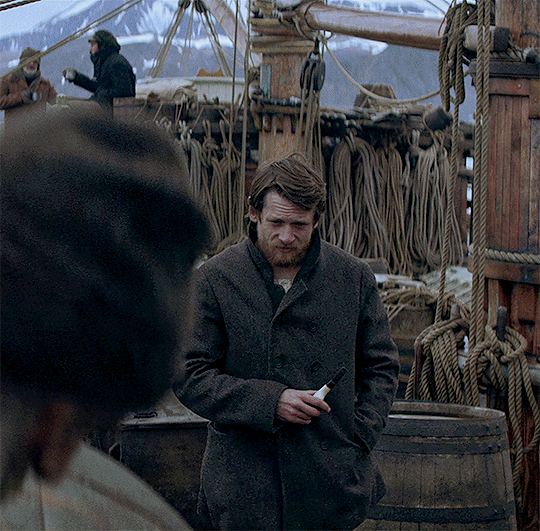
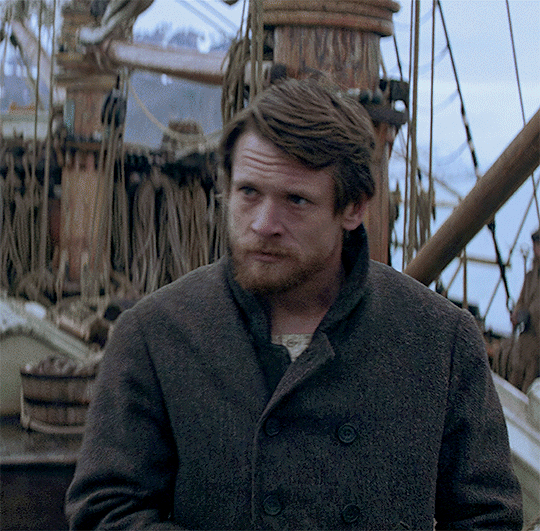
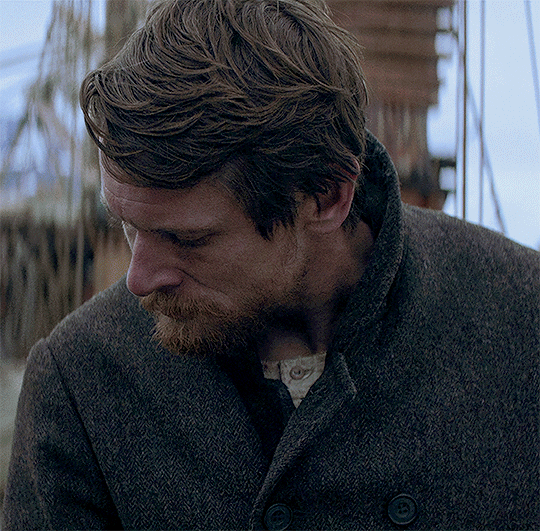
JACK O'CONNELL as Patrick Sumner
2021 • The North Water • S1·EP2 • dir. Andrew Haigh
#jack o'connell#the north water#perioddramaedit#patrick sumner#tvedit#period drama#1850s#epic drama#arctic exploration#ian mcguire#based on a novel#actors#costume design#beautiful men
162 notes
·
View notes
Text
Garth Ennis talks Battle Action with Forbidden Planet TV, third new series in the works
Rebellion have been doing a phenomenal job with their Garth Ennis-curated revival of one of the most influential British anthology comics of all time, IPC Fleetway’s Battle Action, and Andrew Sumner has been chatting with him about it for Forbidden Planet TV.
In a wide ranging chat, centring on the recent release of Battle Action Volume Two, Garth confirmed a third series of new stories is in…
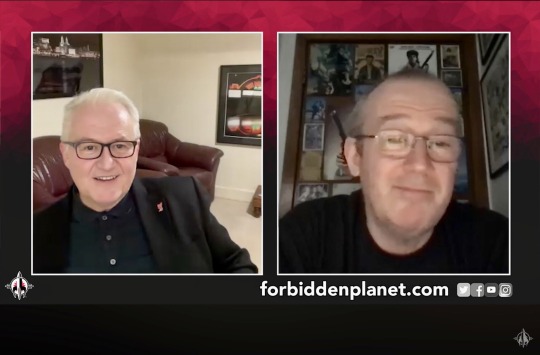
View On WordPress
#Andrew Sumner#Battle Action#Creating Comics#downthetubes News#Forbidden Planet TV#Garth Ennis#War Comics
2 notes
·
View notes
Text

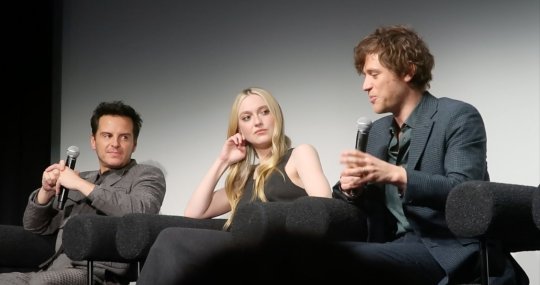



youtube
#andrew scott#dakota fanning#johnny flynn#eliot sumner#maurizio lombardi#steven zallian#ripley press#ripley#q&a#screening#i haven't watched it yet#Youtube
21 notes
·
View notes
Text
there’s so many ppl enabling me in the notes of this post, so here enjoy some Thoughts i’ve had about the nurseydex maine road trip so far:
they do a road trip up the coast of maine over fall break their senior year so that nursey can see acadia national park while the leaves are changing
william “acts of service” poindexter decides that it is his Responsibility as nursey’s captain and fellow d-man to become maine’s official tour guide barbie. he plans the entire thing out and even prints them little itineraries and maps and shit because this boy is nothing is not Efficient
nursey makes them stop to see every single lighthouse they go anywhere near just to be a little shit (there are 65 lighthouses in maine, this would take So Long even if you just stopped at like a quarter of them)
the only canonical reference i could find for any actual locations in maine in the comic is that dex said his uncle who owned the lobster fishing boat he worked on over the summers lived in portland
(a side note to the above, i find this hilarious. portland is an pretty solidly liberal urban city - imagine a very small boston - and not somewhere you’re very likely to find small family-owned lobster fishing boats, at least in my experience. it would make way more sense for his uncle to live somewhere like rockland but i digress)
dex is 100% positive that nursey would Love portland so he carves out two whole days of their trip for them to stay with his uncle and explore. they go to the art museum and old port and the port head lighthouse and the top of the world lookout at fort sumner park and all the little shops and hidden places dex had found from living there every summer for years
nursey does end up loving portland but it might be more about the boy that shows it to him
even though his uncle lives in portland, i am still personally convinced that dex’s family mostly lives around the rockland area. i will go on a rant about nursey meeting dex’s close family another time, but while they’re in rockland, nursey continues his dedication to seeing all the lighthouses he can by forcing dex to make the almost mile long trek out to the breakwater lighthouse with him (don’t think about them standing alone next to this little building almost a mile out from land. the wind is chilly and strong and it makes dex’s hair look ridiculous and his cheeks flush and nursey definitely doesn’t want to kiss him ITS FINE ITS CHILL)
dex has them make a detour up to bangor and surprises nursey with going to see stephen king’s house. he doesnt understand why people are interested in looking at some dudes house At All but he does know nursey would love it so he does it anyways. the fence is cool and nursey gets so excited he almost face plants jumping out of the car, so dex counts it as a success
some random places i feel like dex would make them stop at along the way: freeport (nursey is both so confused and so delighted by just Everything about that place, but he loses his mind over the mcdonald’s and the ll bean outlet), ogunquit (dex purposefully takes highway 1 instead of the maine turnpike going towards portland so that they drive through ogunquit and he can see nursey’s face when he realizes they’re driving through the single gayest town he’s ever seen in his life and it’s in southern maine), moose point state park (there are a billion lil state parks in maine but i just randomly like this one in particular idk i think it’s cute), camden hills state park (it’s too foggy when they get there to drive up to the top so nursey makes them go on a hike instead so they didn’t “waste their time.” they get lost within like 10 minutes and are wet from the fog by the time they make it back to the car like 2 hours later), the desert of maine (it’s kinda boring to dex bc he’s seen it a dozen times since he was a kid, but nursey gets enthralled by the science behind it so it’s worth it), cushing (this is where the famous painter andrew wyeth lived at the olson house and was the subject of a lot of his work and i just feel like nursey would have fun seeing this place)
when they eventually make it to acadia, nursey ends up spending like two solid hours just sitting at sargent peak staring out over everything and desperately scrawling out lines of poetry into his notebook (dex spends most of those 2 hours staring at nursey but somehow doesn’t notice that nursey definitely isn’t writing about the scenery)
#im thinking about legitimately writing this out but hoo boy it'd end up being so long#will anyone actually see this? no probably not but it was fun to get it out of my head lol#lmk if any of you want me to add pics of these places so you have reference for wtf im talking about without having to google everything#nurseydex#derek nurse#william poindexter#omgcp#nurseydex maine roadtrip au
258 notes
·
View notes
Text
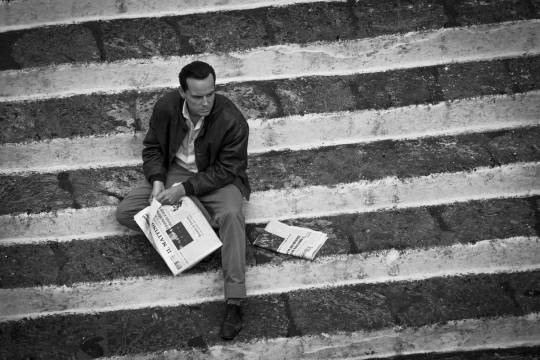
R I P L E Y (2024)
***Contains SPOILERS***
A review (of sorts, but more a rambling opinion piece that veers off the main subject occasionally).
So I've watched R I P L E Y (2024), all eight episodes of it. One word: Bravissimo!
As someone who loves the Ripliad series of novels by Patricia Highsmith immensely, and having watched all the Ripley film adaptations there are thus far — Plein Soleil aka Purple Noon (1960), The American Friend aka Der Amerikanische Freund (1977), The Talented Mr. Ripley (1999), Ripley's Game (2002), and Ripley Under Ground (2005) — I went into this new series (released on Netflix on April 4th) with expectations…
Not high, for I've learned it's never good to have high expectations or you'll more than likely just be setting yourself up for disappointment…but with expectations all the same!
Thus far, my favourite Ripley film adaptation had been 2002's Ripley's Game starring John Malkovich as an older Ripley. Had been. Until this series that is! I still love Ripley's Game a lot of course! (heh!) And there really should be no comparison given it's two different mediums and the two Ripleys are portrayed from different times of the character's life.
So saying, this new series definitely sets a new standard for a Ripley adaptation! And as someone who love the books a lot, I'm glad this series is very closely adapted from the first book!
The decision to go for a black and white cinematography, I was skeptical about that at first but after looking at the trailers and reading on the director's reasoning for going B & W with this, I can understand why, and generally agree with his decision.
Though at times, especially when looking at the wonderful interior sets, I'll be wishing I could see it in all its colour glory and thinking what a waste it was not to have it in colour, but that is but a minor hitch, for the B & W cinematography is done with superb mastery and skill, and it's hard to find fault with going this route. And it does contribute to getting into the film noir feel from films of yesteryear.
On the actors, I was skeptical on Andrew Scott as Ripley at first, but I'm happy to say he has proven me wrong and his Ripley, while not as young as Ripley should be at the start of the novel series, is one that is characterised the closest, and if Showtime/Netflix has any plans to adapt the rest of the novels, Scott will be perfect as an older Ripley, I think!
Maybe that was/is the plan…that's why Scott was chosen even though age wise, he doesn't quite fit in the beginning…one can hope! (heh!)
Moving on, just a brief rambling on the other main actors/characters because I'm getting tired:
Love Dakota Fanning as Marge Sherwood, she was exactly how I imagined Marge to be as I read the (first) book. A superb performance by Fanning I'd say!
Johnny Flynn as Dickie Greenleaf was underwhelming for me partly because in my eyes, Jude Law was/is the perfect Dickie (even if his — Law's — American accent was/is questionable), but partly also because I find Flynn is lacking charisma (sorry, Flynn fans!), I didn't get the sense of what was so fascinating about this Dickie that Ripley would be so enamoured with him or his lifestyle, enough to kill for it.
Perhaps the fault lies partly with the script too for I felt we the audience didn't get to see more of what drew Ripley to Dickie, besides his obvious wealth and status.
Eliot Sumner as Freddie Miles. Now this was the character that underwent the most drastic change as compared to the book and the 1999 The Talented Mr. Ripley film adaptation. In both the book and the 1999 film, Freddie was described (and portrayed to perfection by Philip Seymour Hoffman in my opinion) as an American with carrot-red hair, stocky, loud and all round obnoxious from miles away sort.
2024 Freddie is slim-built, androgynous looking, with a cherub face and British…he's practically a whole different character except in name.
As such, it's unfair to compare I guess, but having envisioned Freddie as described in the book for so long, helped along by PSH's award-worthy performance, I'll just say this is not the Freddie for me.
But, that doesn't mean Sumner's Freddie was bad. In terms of being almost a foil to Ripley, Sumner's Freddie is still quite effectively annoying.
Special mentions to Maurizio Lombardi and Margherita Buy as Inspector Ravini and Signor(in)a Buffi (Ripley's landlady) respectively! I enjoyed watching these two characters.
Also a special mention to Lucio (Signor(in)a Buffi's cat), who, had it been able to speak, Ripley would certainly have silenced! (heh!)

Last but not least, a special mention to John Malkovich as Reeves Minot.

I was so excited when I first saw Malkovich in the trailer because not only is his casting a nice tribute to his turn as Tom Ripley in Ripley's Game (2002), I thought he would be playing Herbert Greenleaf at first, but he turned out to be playing Reeves Minot! Even better! Gives more hope that new seasons of R I P L E Y (2024) may happen!
Those who have read the books will know that Reeves Minot is a recurring character in the later books — I can't really remember how many exactly, it's been some time since I last read them (and I should again!).
To sum up, I did enjoy this series tremendously and will definitely rewatch many times to come, and I hope we'll get further adaptations of the other books with the same standards as set for this one!
P.S.: I've seen a few people mention “this (R I P L E Y) is like Saltburn!”. I never heard of the film Saltburn before looking at some opinion pieces, but after looking it up, dare I say, Saltburn ripped off the Ripliad stories and its characters (the Ripliad books first came out in the 1950s) and I think it's more appropriate to say “Saltburn is like Ripley”!
#Dake Rambles#Ripley 2024#Ripley Netflix#Andrew Scott#John Malkovich#Ripley's Game#The Talented Mr Ripley
25 notes
·
View notes
Text
'Patricia Highsmith (1921-1995) was the author largely of books ubiquitously described as psychological thrillers, but the adjective is doing much more work than it usually does in such descriptions. The psychological depths tend to be far deeper than just a worry about being caught for assorted misdeeds. It’s no surprise that her works have proven appealing to all sorts of directors. When your first novel is adapted a year after publication by Alfred Hitchcock, you know you’re doing something right. Strangers on a Train is about much more than just a macabre plan. Wim Wenders’s The American Friend, Claude Chabrol’s The Cry of the Owl, and Todd Haynes’s Carol are all very good.
Tom Ripley is Highsmith’s best-known creation. Turning a Henry James plot into pulp fiction is not the sort of thing that’s usually advisable, but she did it extraordinarily well. The plot of The Ambassadors, an industrialist hiring a man to seek to induce her son to return to America from expat indolence, is cribbed here as a foundation. The James protagonist finds Europe much to his liking, as does Highsmith’s Ripley. When the European idyll is threatened, Ripley has a novel thought: Why not bump the young scion off and take his place?
This sounds like a preposterous plan to execute. And it is! That’s why it’s entirely engrossing. Her aim was, she wrote, “showing the unequivocal triumph of evil over good, and rejoicing in it. I shall make my readers rejoice in it, too.” Netflix‘s new series, Ripley, succeeds in replicating exactly this feat.
The trouble with prior screen adaptations of Highsmith’s Ripley stories has been that he’s always been made far too pleasant. If René Clément’s French language 1960 Purple Noon and Anthony Minghella’s star-studded 1999 The Talented Mr. Ripley are both credible adaptations in their own way, there’s something askew about both matinee idol Alain Delon or effortless everyman Matt Damon as Tom Ripley. Dennis Hopper and John Malkovich both had elements of the Ripley persona down in adaptations of later novels (Barry Pepper did not), but there still seemed to be elements of the portrait missing.
I’m sure I’m not the only reader to find the versatile con man who appears across five Highsmith novels initially repellent. He is not enthusiastic, loathing nearly all of the effort involved in his cons. And he is not loquacious or charismatic as we might expect from a grifter. In almost his very first deception at the start of The Talented Mr. Ripley (the subject of this adaptation), he himself notices the cracks in his crocodile grin: “When he looked into the mirror, he found that his face had turned down at the corners.” Most frauds will say nearly anything to wheedle their way into favor. Talk is normally very cheap when you have no regard for truth. Ripley can’t bring himself to muster more than the mildest of faint praise for execrable paintings by his main mark. Almost every decent person has told white lies with less hesitation.
Things are different in Ripley, the best adaptation of the novel to date, thanks in considerable part to the casting of Andrew Scott (familiar from a variety of things but most germane to this particular role as Moriarty in the BBC Sherlock series) as Ripley. Scott telegraphs unease and strain with great facility. Sometimes, he’s vaguely normally personable. At many other points, his strained effort seems entirely transparent. This sort of calibration captures in excellent fashion the frank distaste that Ripley feels for almost everyone in the source material, a difficult thing to pull off in a book largely composed of his own train of thought. He is terrifically bored by most of his targets and doesn’t work all that hard to conceal the fact. He succeeds somehow with most people. It’s reliably a surprise that only a few see through him.
If the promise of streaming television has been tarnished by countless long-winded series that have no idea how to pace themselves or end, this one makes excellent use of an eight-episode frame to tell the tale of the novel basically in full. Prior adaptations simply couldn’t do that within a feature film length. Purple Noon opens in media res. The Talented Mr. Ripley condenses a number of things. There are some minor emendations, most of which are actively good and almost all at least forgivable.
The book dedicates an enormous amount of time to Ripley’s scheming and improvising. His plans are usually not airtight. Much of the riveting character of the book is how easily he might be caught at almost any moment. A number of sequences whose dramatic tension is contained in their great length are presented in white knuckle effulgence here. Two very lengthy corpse disposals are engrossing. Conversations are lengthy, full of pregnant pauses. There’s even high drama wrought out of multiple bank scenes in which we find Tom feloniously drawing funds.
Steven Zaillian, who wrote the screenplays for Schindler’s List, The Gangs of New York, and The Irishman, provides an excellent script and credible direction. The work of cinematographer Robert Elswit (whose credits include There Will Be Blood) is great. Ripley’s early miserable life in New York is presented well. The tenements are squalid and subways sweltering. La Dolce Vita-era Italy looks all the more rapturous afterward, with shadows and light in various palazzi motivating almost anyone to murder. Locations across south Italy, Capri, and Venice are excellent.
Casting beyond Ripley himself is very strong. Johnny Flynn’s Dickie Greenleaf is a perfect, vaguely dim, but charismatic offspring of privilege. Maurizio Lombardi, perhaps familiar as a cardinal in The Young Pope, is a very strong inspector on the case. Playwright Kenneth Lonergan (who also co-wrote The Gangs of New York) is an ideal Herbert Greenleaf. The casting of Freddie Miles is one substantial deviation, here not the churlish porker of the novel (Philip Seymour Hoffman was about ideal) but rather an androgynous proto-Eurotrash wisp. Dakota Fanning’s Marge Sherwood, Dickie Greenleaf’s tedious paramour, is rendered more truly than any prior. She’s no stunning beauty but a rather average girl in “naive clothes” with “windblown hair and her general air of a Girl Scout.”
Now, Ripley is not exactly a fan of any women if Marge is particularly low on the list. Ripley is very deliberately rendered as sort of gay in the novel. He finds Dickie handsome and Marge repulsive. At a key juncture, he notes he “could have hit Dickie, sprung on him, or kissed him, or thrown him overboard.” This is not the range of options most people consider in a social dilemma, no matter their sexual orientation. Purple Noon basically omitted this element, while The Talented Mr. Ripley camped it up. Ripley replicates the novel’s deliberate ambiguity. He seems devoid of almost any active sexuality and likes almost no one, with exceptions for a handful of men.
What Ripley does like are the finer things in life. He thrills to travel, fine clothing, beautiful objects, and art. These things receive all sorts of close cinematic attention. There is a Hitchcockian cinematic focus on pens, an ashtray, and other talismans of the good life (that also might be used to kill).
Ripley contains a cameo from Malkovich (who portrayed Ripley in another earlier adaptation, Ripley’s Game) as a character from the next novel, and Zaillian optioned all five Ripley novels. Let’s hope that the viewers stream in, as it would be nice to see more of this Ripley.'
#Patricia Highsmith#The Talented Mr Ripley#Steven Zaillian#Ripley#Netflix#Andrew Scott#John Malkovich#Ripley's Game#Anthony Minghella#Purple Noon#Matt Damon#Dennis Hopper#Alain Delon#Sherlock#Moriarty#Freddie Miles#Eliot Sumner#Dickie Greenleaf#Johnny Flynn#Dakota Fanning#Marge Sherwood#Robert Elswit#Kenneth Lonergan#Maurizio Lombardi#Inspector Ravini#Philip Seymour Hoffman
5 notes
·
View notes
Text
118 notes
·
View notes